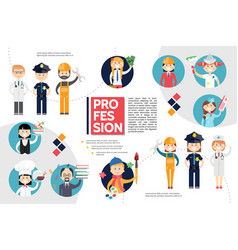Discover Exactly How Seasonal Elements Affect Business Exterior Paint Success And Discover The Best Times To Ensure Enduring Results For Your Project
Discover Exactly How Seasonal Elements Affect Business Exterior Paint Success And Discover The Best Times To Ensure Enduring Results For Your Project
Blog Article
Personnel Author-Leach Rodriquez
When you're intending an industrial external paint job, seasonal variables can make or break your results. You'll intend to consider just how temperature and moisture influence paint application and drying times. Choosing the appropriate period can guarantee your paint sticks correctly and lasts longer. But which periods are absolutely the best for this kind of job? Let's check out the crucial elements that can influence your project's success.
The Impact of Temperature Level on Paint Application
When you're planning an industrial external painting task, the temperature level can considerably affect just how well the paint adheres and dries out.
Preferably, you wish to repaint when temperatures range in between 50 ° F and 85 ° F. If it's also chilly, the paint might not treat properly, bring about problems like peeling off or breaking.
On the flip side, if it's as well warm, the paint can dry as well rapidly, stopping correct bond and causing an unequal finish.
You must additionally take into consideration the time of day; early morning or late afternoon provides cooler temperatures, which can be extra favorable.
Always inspect the supplier's referrals for the details paint you're making use of, as they commonly provide assistance on the optimal temperature level variety for optimal results.
Humidity and Its Impact on Drying Times
Temperature isn't the only ecological element that affects your business outside paint task; humidity plays a considerable duty too. High humidity degrees can decrease drying times substantially, impacting the overall quality of your paint work.
When the air is saturated with wetness, the paint takes longer to cure, which can lead to problems like poor adhesion and a greater danger of mildew growth. If you're repainting on a particularly moist day, be prepared for extended wait times in between coats.
It's critical to monitor local climate condition and plan accordingly. Ideally, aim for moisture levels in between 40% and 70% for optimum drying out.
Keeping these factors in mind ensures your job remains on track and delivers a long-term finish.
Best Seasons for Commercial Outside Paint Projects
What's the best time of year for your business external painting projects?
Spring and very early autumn are normally your best bets. Throughout these seasons, temperatures are moderate, and humidity degrees are frequently lower, producing excellent problems for paint application and drying.
Stay clear of summer season's intense heat, which can trigger paint to completely dry as well swiftly, resulting in inadequate adhesion and finish. Similarly, check this site out can prevent proper drying and treating, taking the chance of the durability of your paint task.
Go for days with temperatures in between 50 ° F and 85 ° F for ideal outcomes. Remember to check the local weather prediction for rain, as damp conditions can ruin your task.
Planning around these elements guarantees your paint task runs efficiently and lasts longer.
Verdict
In conclusion, preparing your commercial exterior painting projects around seasonal factors to consider can make a significant difference in the result. By scheduling work throughout the suitable temperatures and humidity degrees, you'll make certain better attachment and drying times. Keep in https://localpaintersnearme87542.azzablog.com/35356860/the-complete-handbook-for-engaging-an-expert-paint-specialist to watch on neighborhood weather report and pick the right time of year-- spring and very early autumn are your best options. Taking these steps will help you achieve a resilient and expert coating that lasts.
